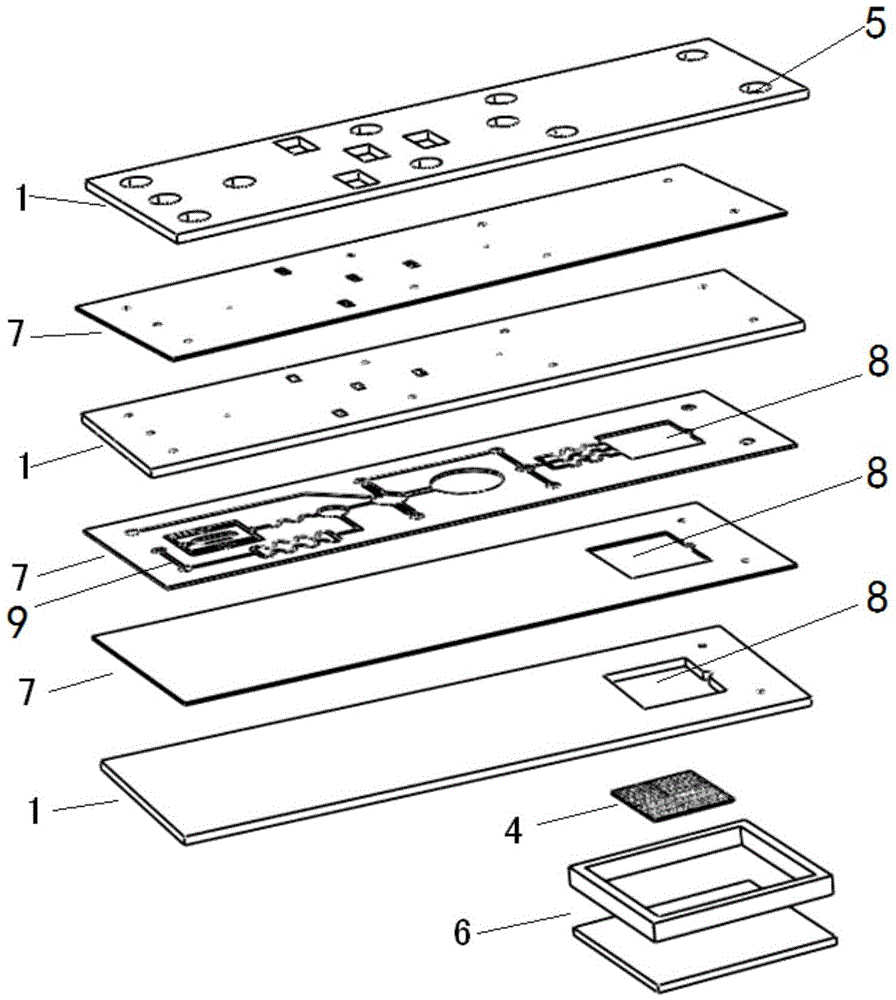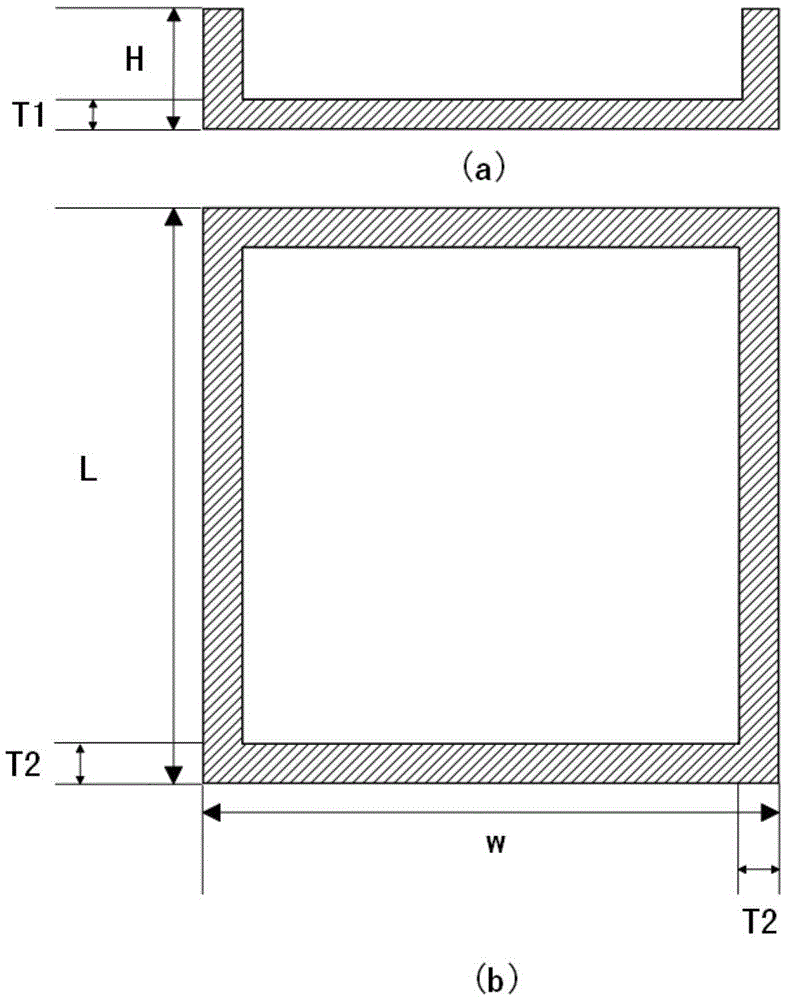Digital PCR chip and using method thereof
A chip and digital technology, applied in the field of devices for dispersing trace nucleic acids or cell solutions, can solve the problems of expensive chip detection instruments, difficult to accurately control the sample adding process, etc., and achieve the effects of short sample preparation time, novel design and easy use.
- Summary
- Abstract
- Description
- Claims
- Application Information
AI Technical Summary
Problems solved by technology
Method used
Image
Examples
example 1
[0043] Example 1 Dispersing colored dyes with PCR chips
[0044] Step 1: Inject 15 μL of dissolved colored dye into the sample hole of the PCR chip, and under the push of external pressure, flow through the silicon microporous chip, and the hydrophilic dye is dispersed and enters the silicon microporous chip. Due to the hydrophilic-hydrophobic structure of the siliceous microporous silicon wafer, the liquid forms jagged edges during the diffusion process (see Figure 6 ).
[0045] Step 2: Inject sealing oil to fill the cavity outside the silicon microporous chip, and at the same time discharge the air in the cavity to form 20,000 mutually independent closed systems. In this way, the added 15 μL colored dye solution is evenly dispersed into approximately 20,000 microsystems with a volume of approximately 1 nL, indicating that the PCR chip has the potential to uniformly disperse nucleic acid or cell sample solutions (see Figure 5 (a), Figure 5 (b), Figure 10 ).
example 2
[0046] Example 2 Disperse a certain concentration of cell solution with a PCR chip
[0047] Step 1: Dissolve 15 µL at a concentration of 10 6 Each / mL MCF-7 cells were stained with life-and-death staining and DAPI staining respectively, and then injected into the sample wells of the PCR chip respectively. Pushed by external pressure, they flowed through the silicon microporous chip, and the cells in the solution dispersed and entered into the silicon microporous chip. hole chip.
[0048] Step 2: Inject sealing oil to fill the cavity outside the silicon microporous chip, and at the same time discharge the air in the cavity to form 20,000 mutually independent single-cell arrays. Not only can independent cells be clearly observed under bright field (see Figure 7b , Figure 7c ), it is also possible to observe the results of cell life and death staining (see Figure 7a ) and DAPI staining results (see Figure 8a and Figure 8b ). It shows that the PCR chip has the ability t...
PUM
 Login to View More
Login to View More Abstract
Description
Claims
Application Information
 Login to View More
Login to View More - R&D
- Intellectual Property
- Life Sciences
- Materials
- Tech Scout
- Unparalleled Data Quality
- Higher Quality Content
- 60% Fewer Hallucinations
Browse by: Latest US Patents, China's latest patents, Technical Efficacy Thesaurus, Application Domain, Technology Topic, Popular Technical Reports.
© 2025 PatSnap. All rights reserved.Legal|Privacy policy|Modern Slavery Act Transparency Statement|Sitemap|About US| Contact US: help@patsnap.com



